Front Cover Page
Table of Contents
Main Body
1. Scope
2. Applicable Documents
3. Abbreviations, Symbols, and Definitions
4. General Reequirements
5. Detailed Requirements
6. Notes
Environmental Tests (TM 1000's)
TM 1001 Barometric Pressure, Reduced (Altitude Operation)
TM 1002 Immersion
TM 1003 Insulation Resistance
TM 1004 Moisture Resistance
TM 1005 Steady-state Life
TM 1006 Intermittent Life
TM 1007 Agree Life
TM 1008 Stabilization Bake
TM 1009 Salt Atmosphere (Corrosion)
TM 1010 Temperature Cycling
TM 1011 Thermal Shock
TM 1012 Thermal Characteristics
TM 1013 Dew Point
TM 1014 Seal
Appendix A Cumulative Helium Leat Test
TM 1015 Burn-in Test
TM 1016 Life/Reliability Characterization Tests
TM 1017 Neutron Irradiation
TM 1018 Internal Gas Analysis
TM 1019 Ionizing Radiation (Total Dose) Test Procedure
TM 1020 Dose Rate Induced Latchup Test Procedure
TM 1021 Dose Rate Upset Testing of Digital Microcircuits
TM 1022 MOSFET Threshold Voltage
TM 1023 Dose Rate Response and Threshold for Upset of Linear Microcircuits
TM 1030 Preseal Burn-in
TM 1031 Thin Film Corrosion Test
TM 1032 Package Induced Soft Error Test Procedure (Due to Alpha Particles)
TM 1033 Endurance Life
TM 1034 Dye Penetrant Test
Mechanical Tests (TM 2000's)
TM 2001 Constant Acceleration
TM 2002 Mechanical Shock
TM 2003 Solderability
TM 2004 Lead Integrity
TM 2005 Vibration Fatigue
TM 2006 Vibration Noise
TM 2007 Vibration, Variable Frequency
TM 2008 Visual and Mechanical
TM 2009 External Visual
TM 2010 Internal Visual (Monolithic)
TM 2011 Bond Strength (Destructive Bond Pull Test)
TM 2012 Radiography
TM 2013 Internal Visual Inspection for DPA
TM 2014 Internal Visual and Mechanical
TM 2015 Resistance to Solvents
TM 2016 Physical Dimensions
TM 2017 Internal Visual (Hybrid)
TM 2018 Scanning Electron Microscope (SEM) Inspections
TM 2019 Die Shear Strength
TM 2020 Particle Impact Noise Detection Test
TM 2021 Glassivation Layer Integrity
TM 2022 Wetting Balance Soderability
TM 2023 Nondestructive Bond Pull
TM 2024 Lid Torque for Glass Frit Sealed Packages
TM 2025 Adhesion of Lead Finish
TM 2026 Random Vibration
TM 2027 Substrate Attach Strength
TM 2028 Pin-grid Package Destructive Lead Pull Test
TM 2029 Ceramic Chip Carrier Bond Strength (Destructive Push Test)
TM 2030 Ultrasonic Inspection of Die Attach
TM 2031 Flip-chip Pull-off Test
TM 2032 Visual Inspection of Passive Elements
TM 2035 Ultrasonic Inspection of TAB Bonds
TM 2036 Resistance to Soldering Heat
Electrical Tests (Digital) (TM 3000's)
TM 3001 Drive Source, Dynamic
TM 3002 Load Conditions
TM 3003 Delay Measurements
TM 3004 Transition Time Measurements
TM 3005 Power Supply Current
TM 3006 High Level Output Voltage
TM 3007 Low Level Output Voltage
TM 3008 Breakdown Voltage, Input or Outpput
TM 3009 Input Current, Low Level
TM 3010 Input Current, High Level
TM 3011 Output Short Circuit Current
TM 3012 Terminal Capacitance
TM 3013 Noise Margin Measurements for Digital Microelectronic Devices
TM 3014 Functional Testing
TM 3015 Electrostatic Discharge Sensitivity Classification
TM 3016 Activation Time Verification
TM 3017 Microelectronics Package Digital Signal Transmission
TM 3018 Crosstalk Measurements for Digital Microelectonics Device Package
TM 3019 Ground and Power Supply Impedance Measurements for Microelectronics Device Package
TM 3020 High Impedance (Off-state) Low-level Output Leakage Current
TM 3021 High Impedance (Off-state) High-level Output Leakage Current
TM 3022 Input Clamp Voltage
TM 3023 Static Latch-up Measurements for Digital CMOS Microelectronic Devices
TM 3024 Simultaneous Switching Noise Measurements for Digital Microelectronic Devices
Electrical Tests (Linear) (TM 4000's)
TM 4001 Input Offset Voltage and Current and Bias Current
TM 4002 Phase Margin and Slew Rate Measurements
TM 4003 Common Mode Input Votage Range Common Mode Rejection Ration Supply Voltage Rejection Ratio
TM 4004 Open Loop Performance
TM 4005 Output Performance
TM 4006 Power Gain and Noise Figure
TM 4007 Automatic Gain Control Range
Test Procedures (TM 5000's)
TM 5001 Parameter Mean Value Control
TM 5002 Parameter Distribution Control
TM 5003 Failure Analysis Procedures for Microcircuits
TM 5004 Screening Procedures
TM 5005 Qualification and Quality Conformance Procedures
TM 5006 Limit Testing
TM 5007 Wafer Lot Acceptance
TM 5008 Test Procedures for Hybrid and Multichip Microcircuits
TM 5009 Destructive Physical Analysis
TM 5010 Test Procedures for Complex Monolithic Microcircuits
TM 5011 Evaluation and Acceptance Procedures for Polymeric Materials
TM 5012 Fault Coverage Measurement for Digital Microcircuits
TM 5013 Wafer Fabrication Control and Wafer Acceptance Procedures for Processed GaAs Wafers
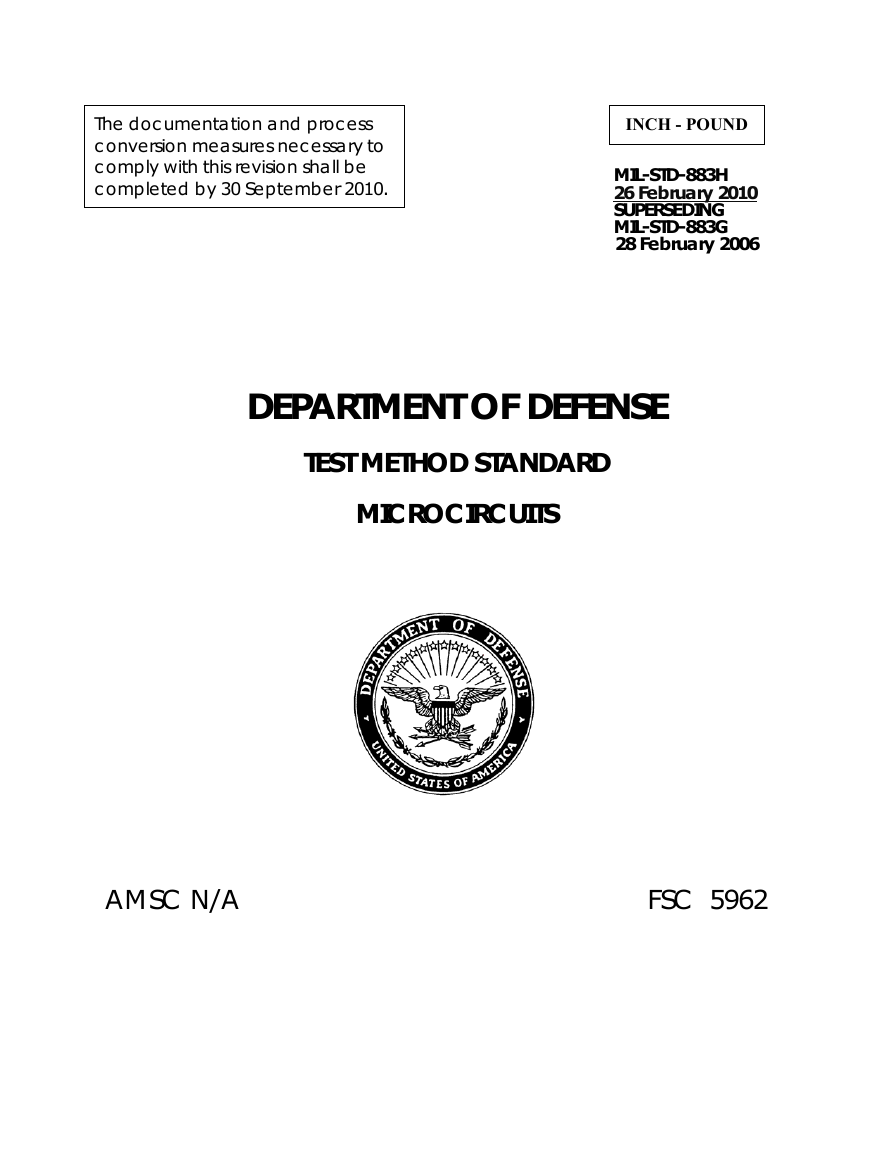
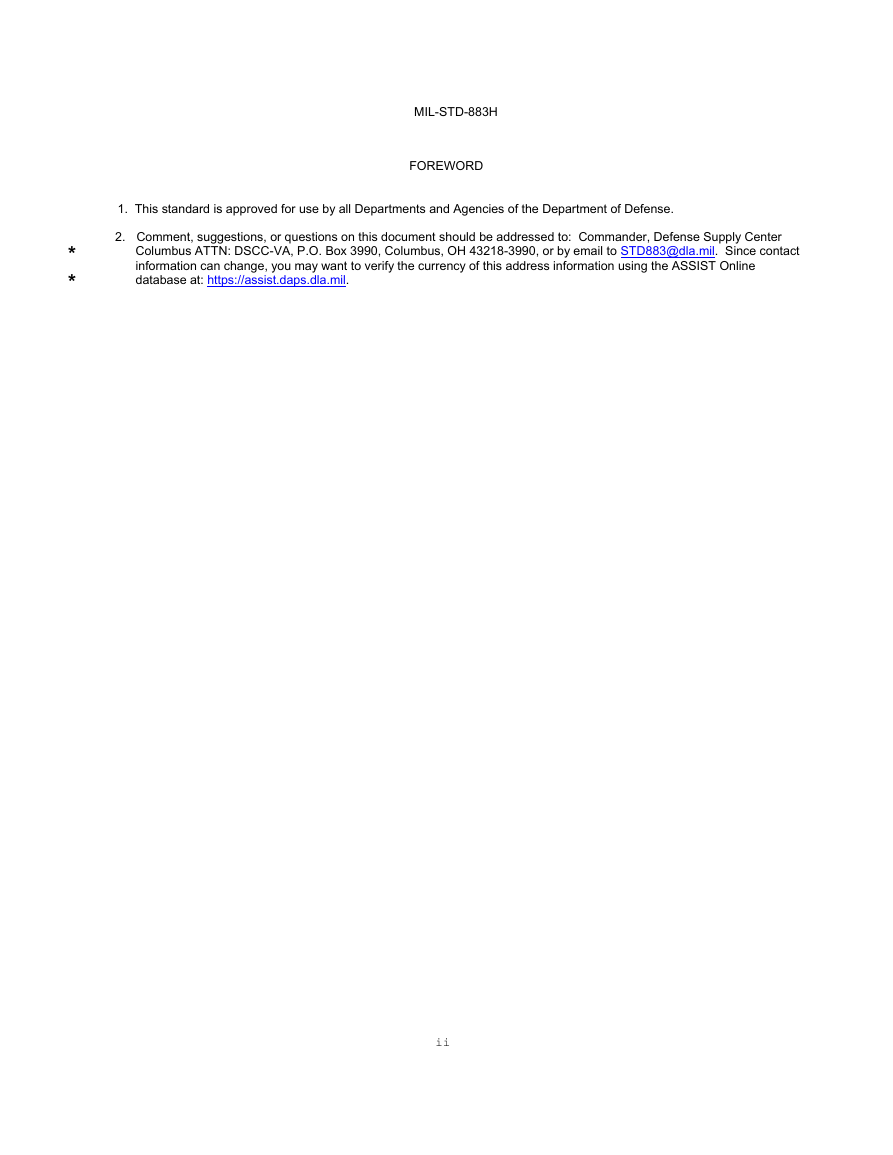
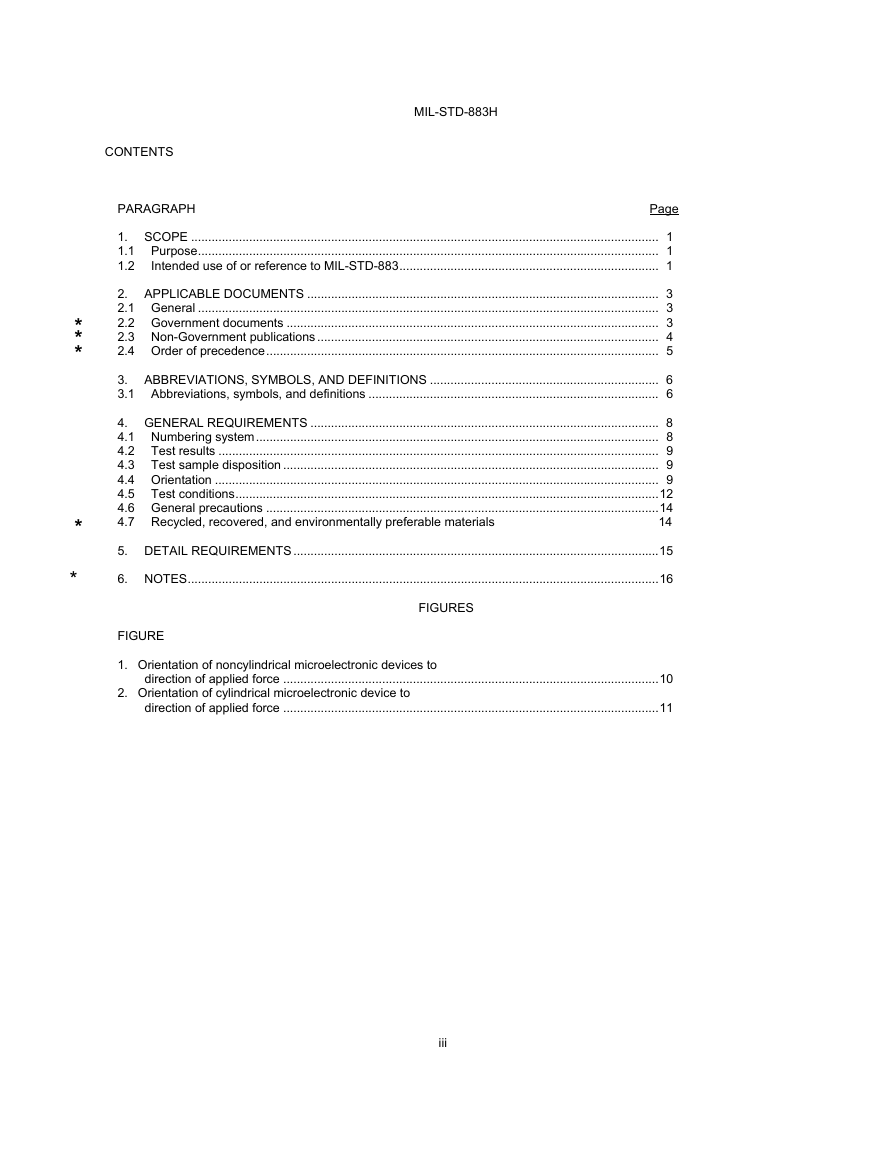

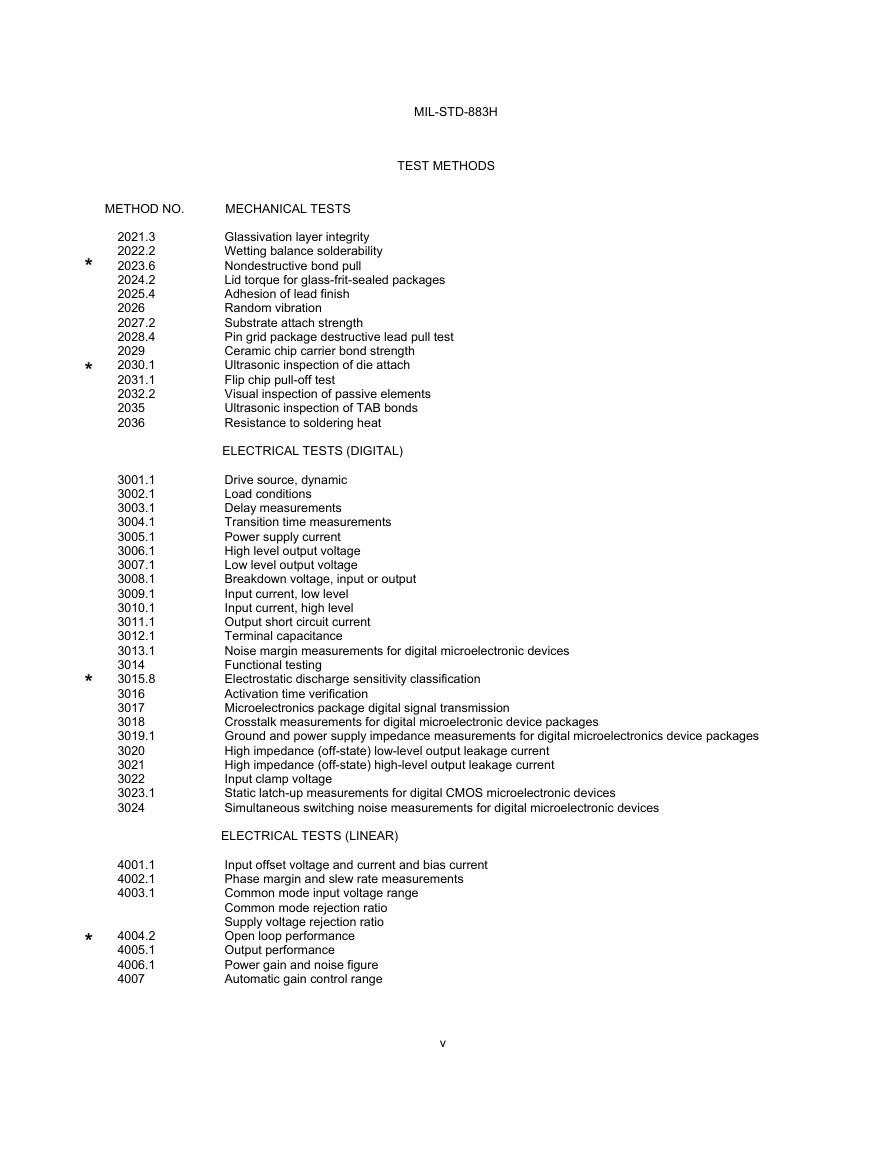

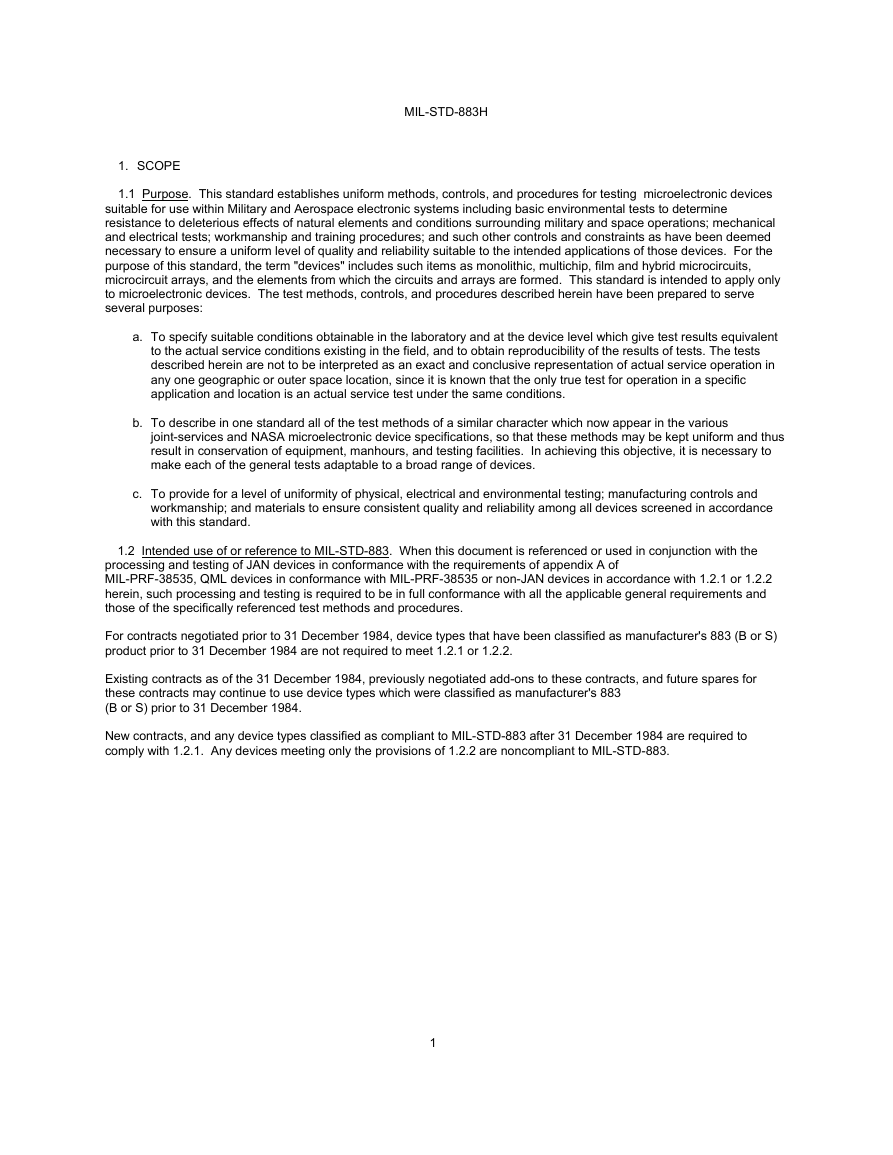









 2023年江西萍乡中考道德与法治真题及答案.doc
2023年江西萍乡中考道德与法治真题及答案.doc 2012年重庆南川中考生物真题及答案.doc
2012年重庆南川中考生物真题及答案.doc 2013年江西师范大学地理学综合及文艺理论基础考研真题.doc
2013年江西师范大学地理学综合及文艺理论基础考研真题.doc 2020年四川甘孜小升初语文真题及答案I卷.doc
2020年四川甘孜小升初语文真题及答案I卷.doc 2020年注册岩土工程师专业基础考试真题及答案.doc
2020年注册岩土工程师专业基础考试真题及答案.doc 2023-2024学年福建省厦门市九年级上学期数学月考试题及答案.doc
2023-2024学年福建省厦门市九年级上学期数学月考试题及答案.doc 2021-2022学年辽宁省沈阳市大东区九年级上学期语文期末试题及答案.doc
2021-2022学年辽宁省沈阳市大东区九年级上学期语文期末试题及答案.doc 2022-2023学年北京东城区初三第一学期物理期末试卷及答案.doc
2022-2023学年北京东城区初三第一学期物理期末试卷及答案.doc 2018上半年江西教师资格初中地理学科知识与教学能力真题及答案.doc
2018上半年江西教师资格初中地理学科知识与教学能力真题及答案.doc 2012年河北国家公务员申论考试真题及答案-省级.doc
2012年河北国家公务员申论考试真题及答案-省级.doc 2020-2021学年江苏省扬州市江都区邵樊片九年级上学期数学第一次质量检测试题及答案.doc
2020-2021学年江苏省扬州市江都区邵樊片九年级上学期数学第一次质量检测试题及答案.doc 2022下半年黑龙江教师资格证中学综合素质真题及答案.doc
2022下半年黑龙江教师资格证中学综合素质真题及答案.doc